3D Truss Models
-
I need to be able to select a face from a truss (truss top chord) even when the entire truss set is nested within a group -> component -> group. I'm going to assume this is possible, even though I don't know how to do this yet. If I can do this I can see a path to creating the valley set code which will allow one to insert a valley set behind a given truss set and have it frame over the main roof, conforming to the main pitch of the roof. At this point I'm only going to make it work if the two ridge lines are perpendicular. If they are different than 90 degrees the calculations are going to be a nightmare, I'll put that one on hold for a later time when I feel particularly ambitious.
-
Version 1.1.0 - 11.10.2015
Gable end trusses enabled for the Fink truss type and all raised heel variants.I may need to adjust the vertical studs slightly for the raised heel with slider. I haven't yet determined the best way to frame that situation out.
-
@medeek said:
Version 1.1.0 - 11.10.2015
Gable end trusses enabled for the Fink truss type and all raised heel variants.I may need to adjust the vertical studs slightly for the raised heel with slider. I haven't yet determined the best way to frame that situation out.
@medeek said:
Version 1.1.0 - 11.08.2015
Added advanced roof options for Common, Scissor and Attic truss types.
Sheathing option enabled under advanced roof options.
Rake Board option enabled under advanced roof options.
Fascia (Flush, Dropped, Beveled) option enabled under advanced roof options.Duplication of version numbers?
-
No, the change is pretty minor so I didn't think it needs its own rev.
-
Gable end trusses for Queen Post and Howe truss types.
I think it is time to start adding some more truss types.
-
On a slightly different note I'm thinking about creating a plugin for wall framing and other misc. framing related items for residential construction:
- Walls
- Floors
- Stairs
- Dormers
- Foundations
- Posts and Beams
- Square and Round Footings
Any great ideas on names. Its going to be something like Medeek Framer or Medeek Construction but I just don't want to make it too narrow in scope since I will probably wrap a number of things into it.
I like the housebuilder extension but I think a lot more can be done based on this initial concept.
Items I would like to see are more flexibility in defining openings, double trimmers, double king studs, double window sill plates.
I would also like to have the ability to create portal frames per the IRC standard. As well as classify certain wall segments as shearwalls and automatically insert the holdown components (Simpson HDU series) into the wall.
For structural engineers I've got some ideas for a plugin called Medeek Structure which will do lateral load analysis for wind and seismic similar to the Woodworks Shearwall software that I currently use on my local engineering projects.
-
I haven't even looked at traditional roof framing, its been all trusses and some floor joists until now.
Hip roof framing is very complicated especially with intersecting roof lines:
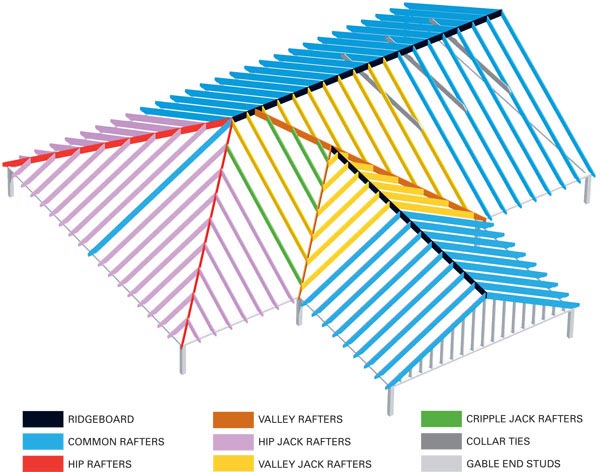
and
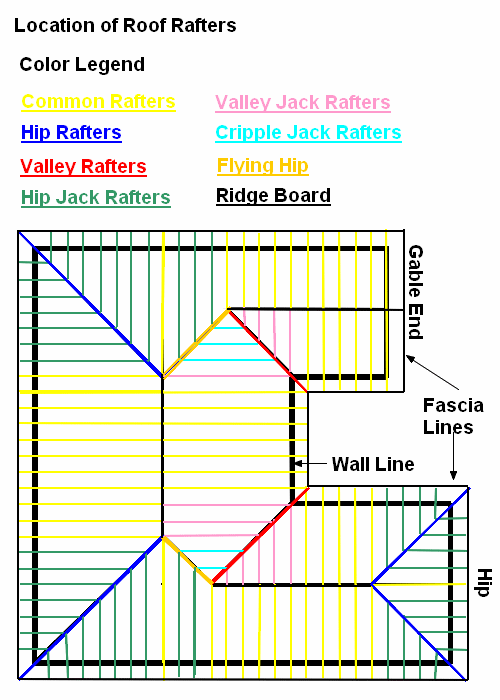
-
Actually let me rephrase that, any roof can get very complicated with intersecting roof lines whether it is framed out with trusses or more traditional rafters and beams.
If I incorporate traditional framing I would like for the user to be able to indicate the perimeter of the ext. walls and for the logic to be smart enough to handle any possible configuration. Consider the custom home with guest house below:
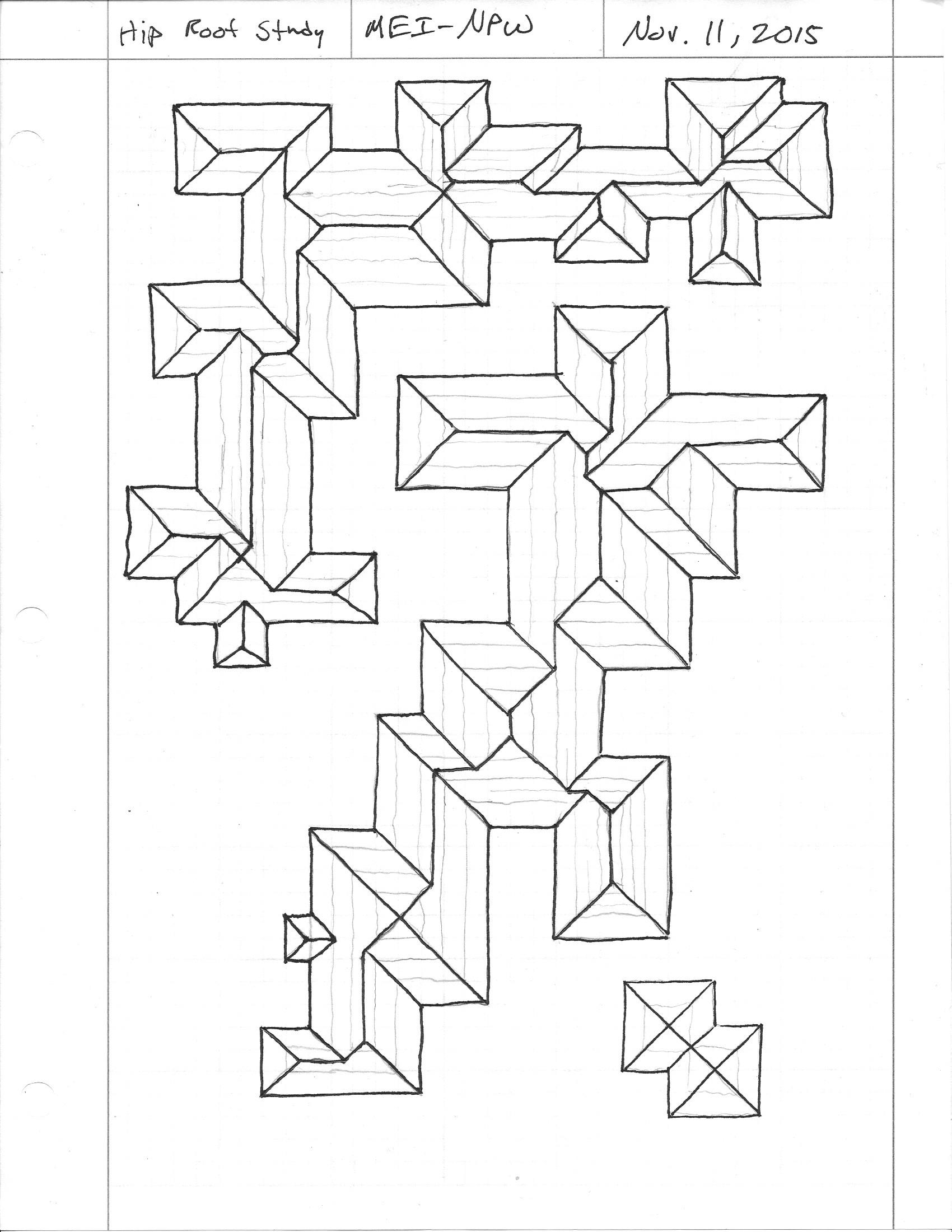
Just to determine the proper placement of the ridge and valley lines requires some serious algorithms. The technique I used to do it manually simply involves drawing isolines moving a fixed increment in from the ext. wall line. These are really no different than contour lines on a topographic map. The vertexes created by the intersection of these lines indicate the location of hip rafter, flying hip rafters and valley rafters. When the isolines merge into one line then you have a ridge board.
-
An interesting implementation of a straight line skeleton algorithm is at this link:
-
Version 1.1.1 - 11.14.2015
- Gable end trusses enabled for all monopitch truss types.
- Added energy/raised heels for monopitch trusses (3 variants: wedge, slider and vertical w/ strut).
Currently there are only two versions of the monopitch truss available (2/2 and 3/3).
The truss set below shows a monopitch truss set with gable ends and a 36" raised heel.
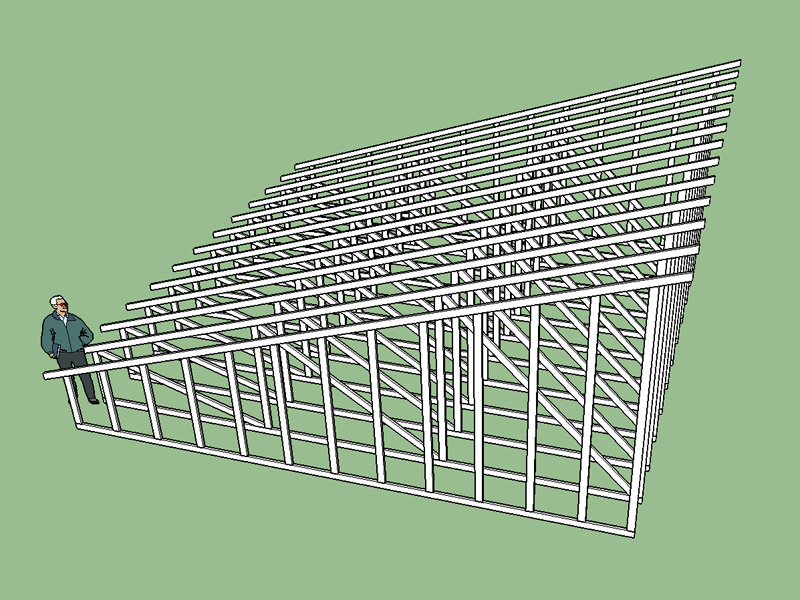
-
I've also added advanced options for monopitch trusses (sheathing, rake and fascia).
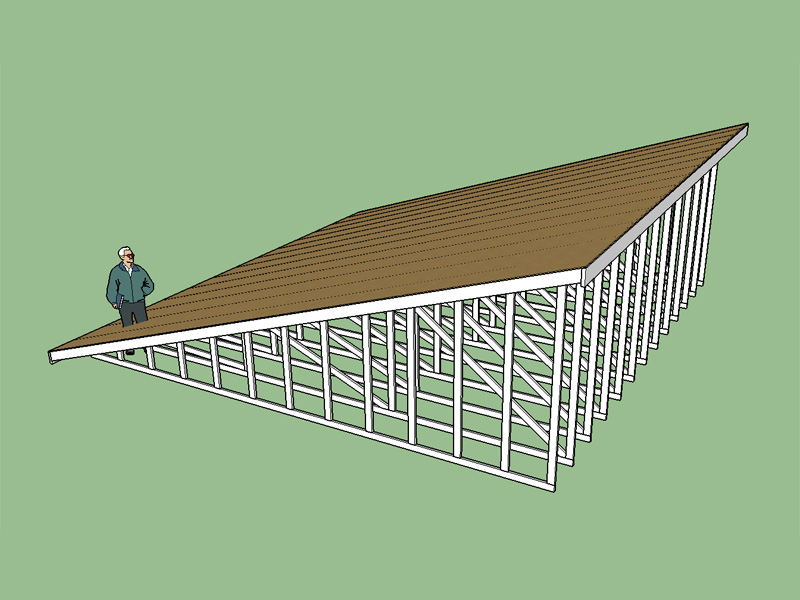
-
Version 1.1.2 - 11.16.2015
Metric input enabled for monopitch truss types. -
Has anyone actually tried to manually create hip roof framing in SU. I had some questions about the geometry and the way certain angles come together so I started drawing a typical hip roof (rafters) and I quickly realized its not at all easy. I can probably do this sort of thing easier in AutoCAD or Solidworks but maybe that is because my familiarity with SU is still somewhat limited. The ability to create traditional hip rafter framing is now on my todo list for the plugin.
-
An excellent video series on drawing a hip roof in SU:
He pretty much has it down to an art. Now I just need to figure out how to mathematically model it so that all of this can be generated within a few seconds and three mouse clicks.
So far with trusses or any other group/component I am creating everything has been 90 degrees so it is simply a matter of drawing a profile and using the push/pull function. With some of these more complicated geometries it is going to get a lot more interesting.
-
Hi Nathaniel,
I made a few Dynamics of hips, valley creepers (see my warehouse page) may help in working out pitching points and angles, or help to formulate your ideas
https://3dwarehouse.sketchup.com/user.html?id=0838679030929007270242769philip
-
Oh, 'THAT' type of TRUSS, sorry I thought you meant something else.......
-
It probably is dependant on the building design what height the cuts are, unless you want to make them even and have no overhang. then the eaves could be the same height. Otherwise with overhangs it seems each building is a special case: whether you want to even up the roof edge height or not, how wide the overhangs are etc.
-
@pcmoor said:
Hi Nathaniel,
I made a few Dynamics of hips, valley creepers (see my warehouse page) may help in working out pitching points and angles, or help to formulate your ideas
https://3dwarehouse.sketchup.com/user.html?id=0838679030929007270242769philip
Do you make these models dynamic within Sketchup or code them in? I need to figure out how to make dynamic components using the API so far I'm not finding much documentation.
-
Given the slopes of the dual pitch truss and the span calculate the distance between the left bearing and the peak:
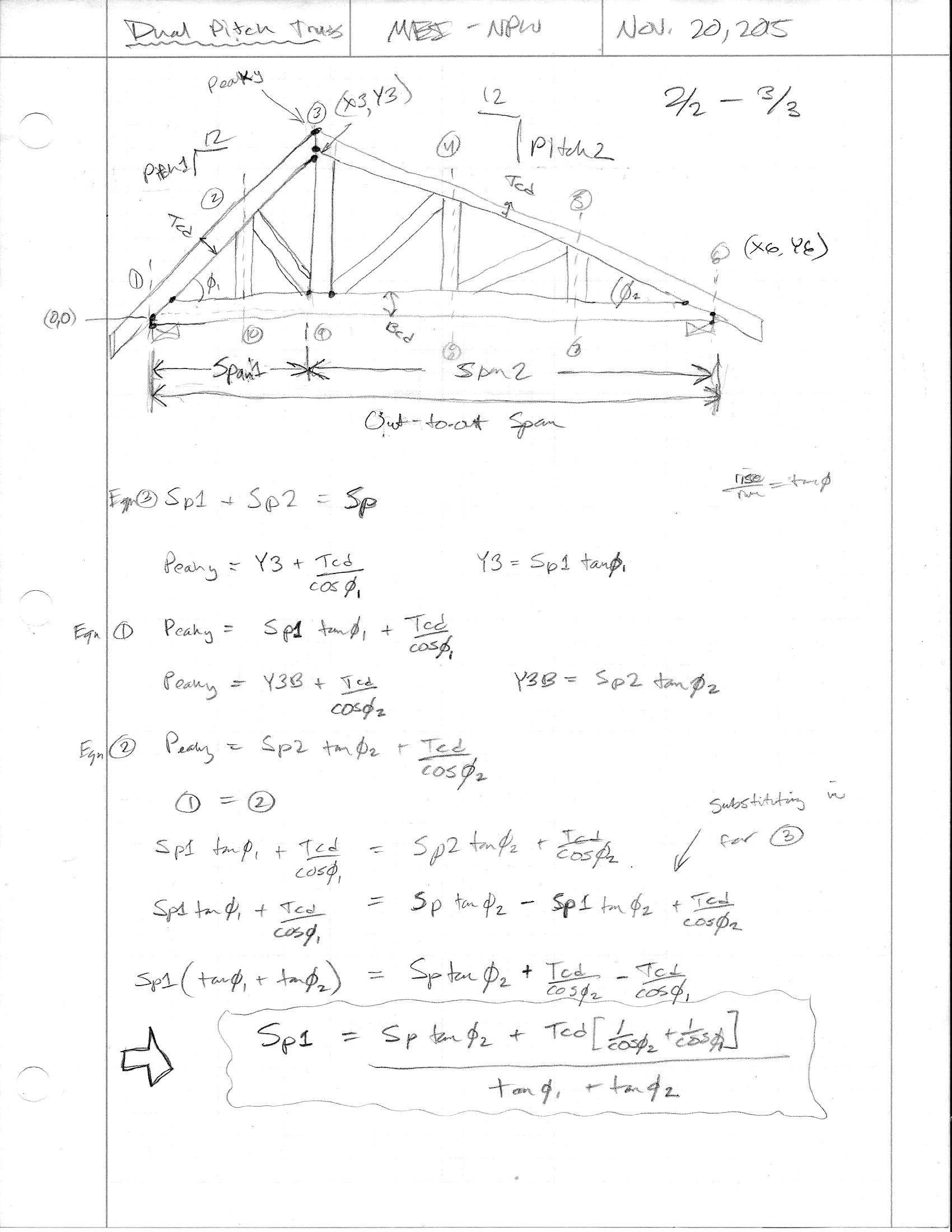
However, you might notice that we are assuming the buttcut and top chord depth is equivalent for both sides. If the slopes are different then this will mean that the heel heights will be different. Should the heel heights be the same?
Addendum:
After giving this some more thought the key for a continuous eave line is (ie. hip roofs) is the fascia. The fascia height is a function of the overhang, pitch, top chord depth and buttcut. I think the easiest is to default to equivalent buttcut and top chord depth for both left and right sides of the dual pitch roof and then give the option for independent overhang and raised heels for both sides this should give enough latitude to the designer so they can make any configuration possible.
-
Downloaded the new 2016 SketchUp and installed the plugin, no issues thus far so I'm going to say its 2016 compatible.
For now I'm going to stay with the current .rbs encryption method otherwise the plugin will not work with previous versions of SketchUp.
Advertisement







